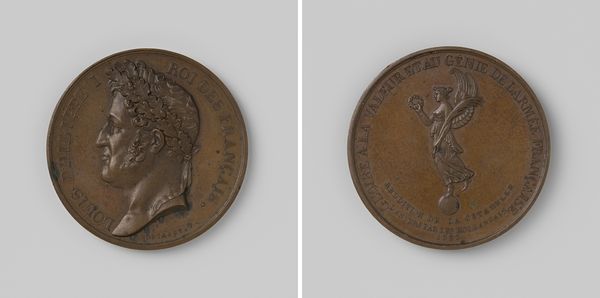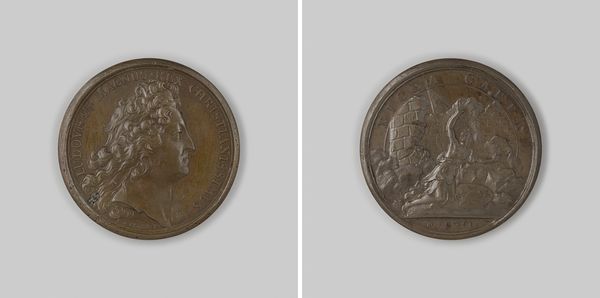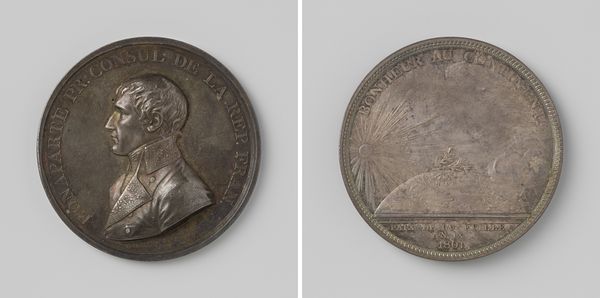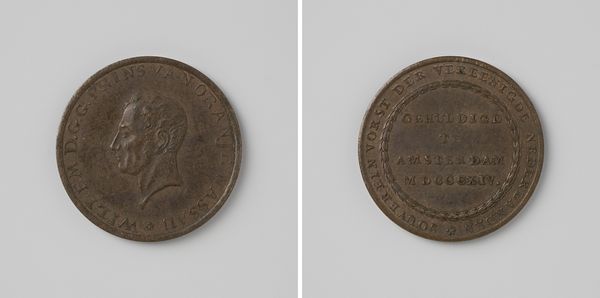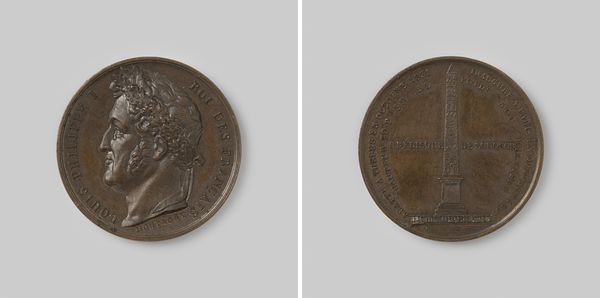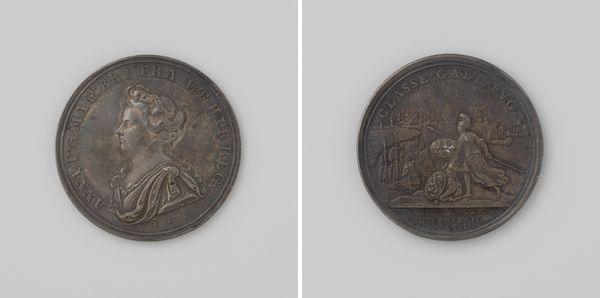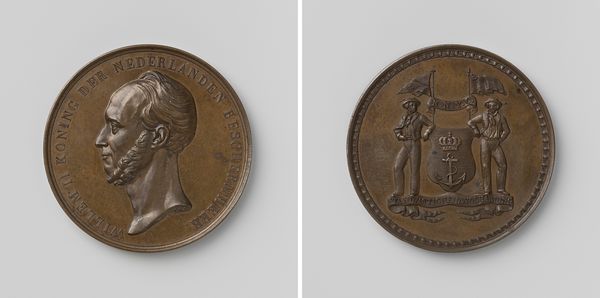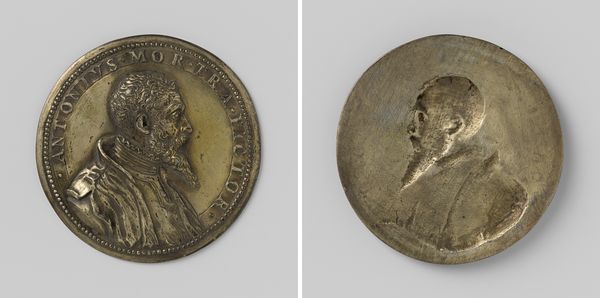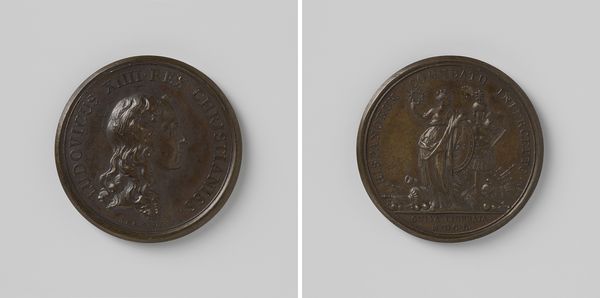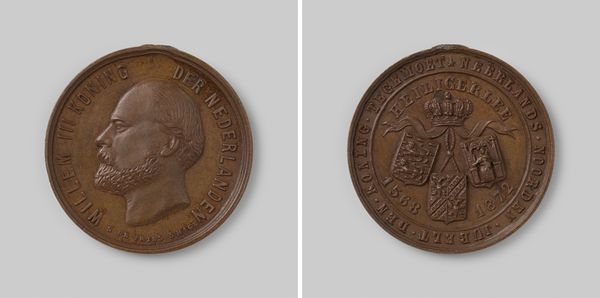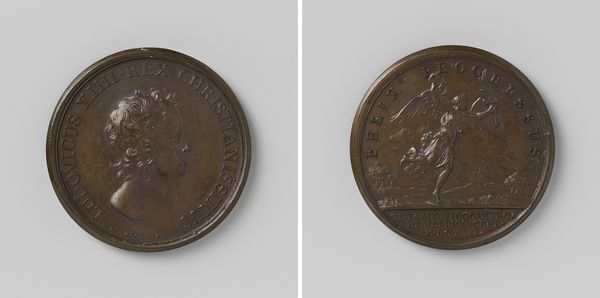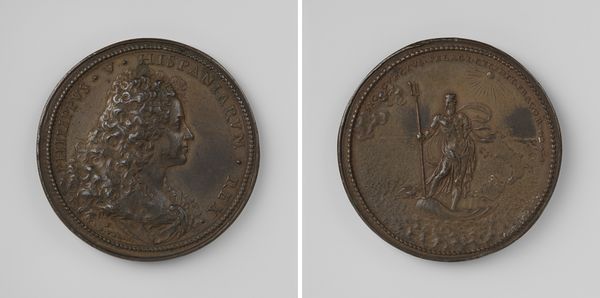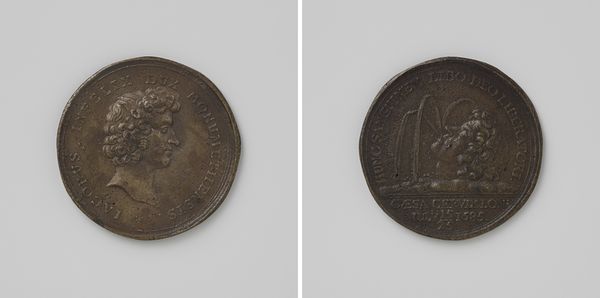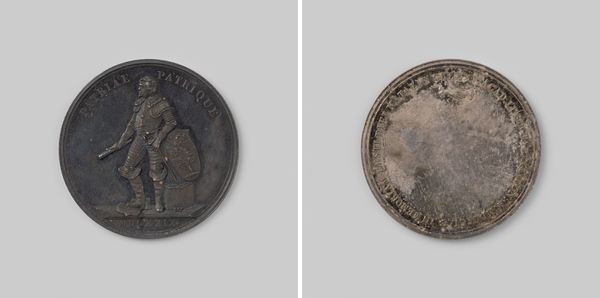
bronze, sculpture
#
portrait
#
sculpture
#
bronze
#
mannerism
#
11_renaissance
#
sculpture
Dimensions: diameter 7.3 cm, weight 38.60 gr
Copyright: Rijks Museum: Open Domain
Curator: This is a bronze portrait medal of Antoine Perrenot, Cardinal Granvelle, created around 1561 by Jacques Jonghelinck. The portrait presents the cardinal in profile, framed by an inscription. Editor: It immediately strikes me how austere and contained the image feels. The dark bronze and shallow relief create a very solemn mood. Curator: That seriousness certainly reflects Granvelle's position. As a key advisor to the Habsburgs, he held immense power, which inevitably placed him within many complex sociopolitical and religious contexts during a tumultuous era of European history. Editor: Absolutely. Considering the context, the execution and composition enhance this image of a man of authority. Note how the incised lettering encircles him, visually reinforcing boundaries and suggesting a degree of confinement despite his influence. The artist uses line and form to construct the essence of a high-ranking official. Curator: Yes, that framing is crucial. But also, let’s consider Granvelle’s own role within those religious conflicts, including accusations that he orchestrated severe crackdowns. These weren't abstract times. This image can become a window onto the real exercise of power. We must remember that portraiture functioned as a form of political statement. Editor: And it's more than a political document, of course. If you isolate the profile—the curve of the nose, the set of the jaw, the sharp delineation of the beard—there is a precise elegance, a kind of beauty. Jonghelinck had a very skilled hand. It moves past the merely documentary. Curator: A useful point to bring up. It encourages a needed complexity: he’s an oppressor perhaps, and a beautiful bronze bust on a chain. We can acknowledge the technique without forgetting what we know about Granvelle. Editor: Indeed, it's that balance—the ability to appreciate form while not shying away from historical context—that enriches our understanding. Curator: Yes, thinking about this small medallion has amplified, for me, the scale of those tensions. Editor: For me, the experience reaffirms that even the most rigid forms can resonate with complex emotions and societal pressures.
Comments
No comments
Be the first to comment and join the conversation on the ultimate creative platform.
